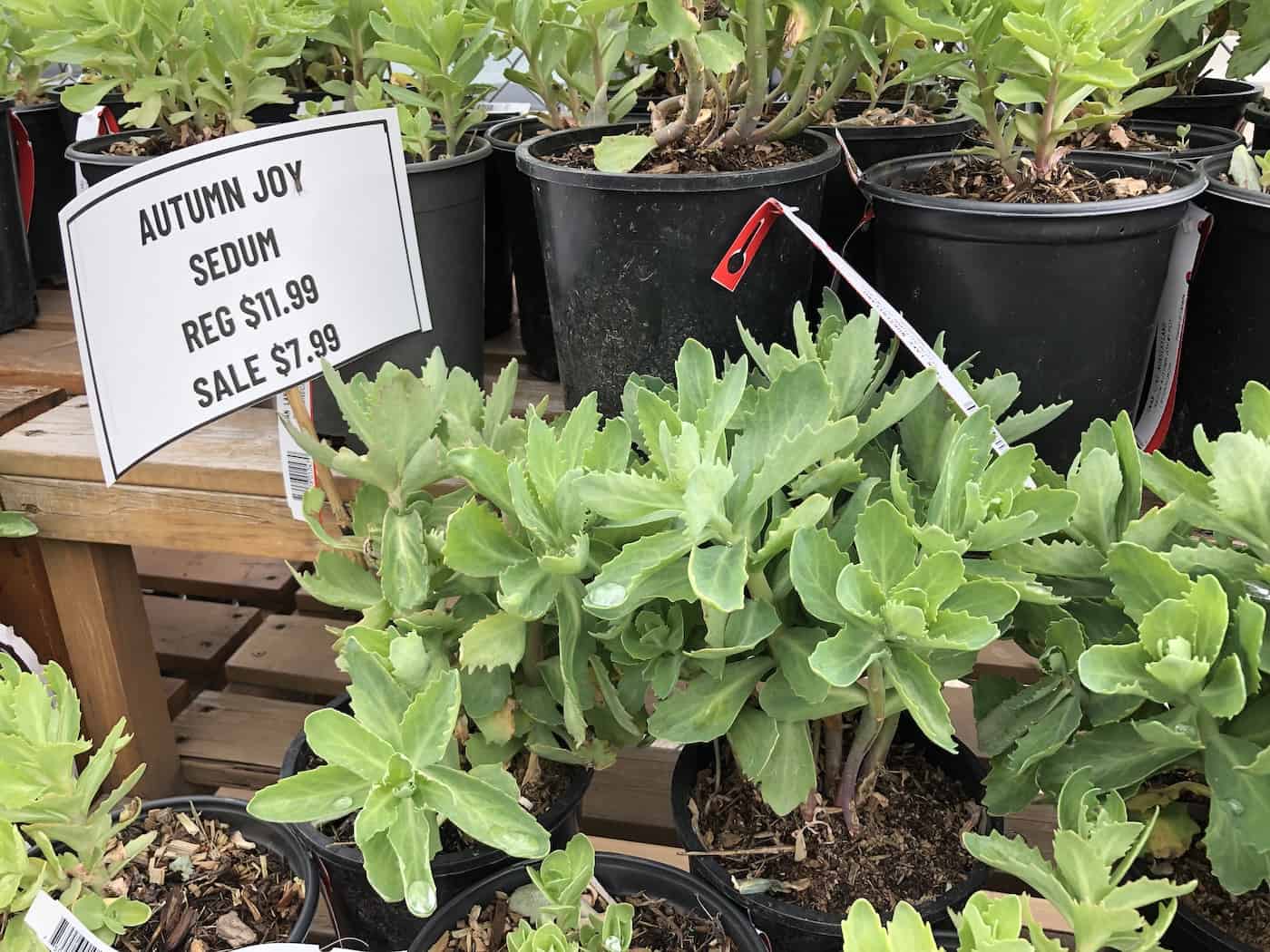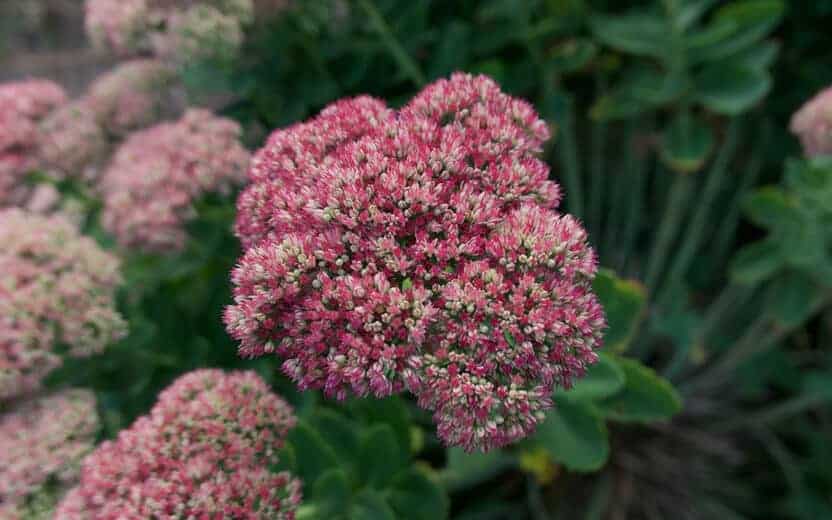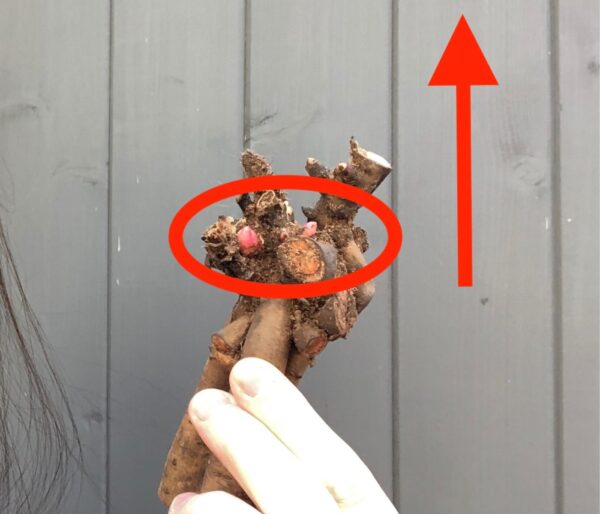Looking for an easy-care plant to brighten up the fall garden? Time to plant Autumn Joy Sedum!
Autumn Joy sedum is a flowering perennial plant in the Sedum genus (known commonly as “stonecrops”). Autumn Joy is among the most popular of the sedums, both because of its vibrant colors and because of its adaptability and dependable nature. This hybrid produces masses of pink-red flowers in late summer and into autumn.
In this article, we will dive more into what exactly these plants are, how to plant and care for them, and common questions people have about them.

Autumn Joy sedum basics
Autumn Joy Sedum is a hybrid plant, created by crossing Hylotelephium telephium (native to Eurasia) with Hylotelephium spectabile (native to China and Korea). Autumn Joy is now one of the most popular sedum varieties available.
Autumn Joy sedum pairs well with pretty much all ornamental grasses and can live for a very long time if it is well cared for. This particular species is commonly used in xeriscaping, which is defined as the practice of designing and creating landscapes in a way that reduces or eliminates the need for irrigation. Often in this specific form of landscaping, grass is replaced with things like soil, rocks, and plants that are drought-tolerant.
Autumn Joy sedum flowers
The flowers on an Autumn Joy Sedum plant typically start blooming in the late summer (usually in August) and will continue to remain open into the mid-fall (probably around November). They will bloom for about 8 weeks in total, and never for longer than two and a half months. The flowers are tiny and star-shaped and grow in blooms or clusters that look almost broccoli-like. The clusters themselves will grow to be about 3 to 6 inches in diameter.
These flowers are known to attract many visitors while they are in bloom. You will probably see many butterflies around your Autumn Joy Sedum during this time, and the flowers also produce a great amount of nectar in the late summer so you will see quite a few bees around it as well. Some other insects might like to come and visit, and you might even see an occasional hummingbird as well.
The color of Autumn Joy Sedum flowers starts as a deep pink when they first open, before they eventually change to a darker shade of pink, and then mature to an orange, copper color befitting of the plant’s name. It can even change to a reddish color sometimes. As for the stems and leaves of the plant, they are a grayish-green color with leaves that are fairly round.

Growing Autumn Joy sedum in the garden
Its overall height reaches 24 inches (2 feet) tall on average. The shape of the entire plant is pretty round and will grow somewhere between 18 and 24 inches (1 1/2 to 2 feet) wide. Though it can also grow to be as small as 1 foot and as big as 3 feet in height and width.
Autumn Joy Sedum can grow well in a wide range of temperatures and climates—from extreme heat to the chill of winter frosts. Once it has been exposed to the first few touches of frost, it will start to die back and then lie dormant for the rest of the winter. It will do well in places with varying humidity too, as long as high amounts of humidity don’t cause the soil to retain excessive amounts of moisture. If it does, it could cause your plant’s roots to rot, causing the rest of the plant to wither and start to die.
Autumn Joy Sedum is a perennial plant, meaning it comes back every year. While the foliage dies back to the ground in cold climates, this plant sprouts back up in the springtime to form a lovely plant every growing season. These flowering plants can really do a good job at taking care of themselves, so they won’t need too much attention or extra care. As long as you plant them in a good location and check up on them every once in a while, they should last for a very long time.

Where to plant Autumn Joy sedum
Now that we’ve covered a lot about the characteristics and nature of the Autumn Joy Sedum, it’s time to dive into some specifications on what to know, what to do, and what not to do when planting it.
It’s okay to plant this specific plant in a place where it has at least partial shade, though if you do put it in full sun it will survive just fine. That’s actually the preferred method, to put it in a place where it will get at least 6 hours of direct sunlight on most days. If you decide on this latter method, you just might need to constantly make sure your plant has enough moisture and that the soil is giving it enough nutrients.
If you put it in a place with too much shade, it can reduce the number of flowers that are produced and make the plant leggy (meaning it looks rather untidy and floppy). Though if you live in a place where summer brings about extremely hot temperatures, your plant might appreciate a little shade during part of the day. Just take into account where you live and the nature of the climate there when deciding how and where to plant an Autumn Joy Sedum.
The best time to plant it is in early fall or in early spring.

How to plant Autumn Joy sedum
The first thing to do is prepare the soil for your plant, so turn it around well and remove any debris for a depth of about 6-12 inches—that is how deep you will then plant it. The Sedum species prefers moist, fertile soil to grow in, but it will still thrive well if it’s put in something a bit dryer (such as more sandy soil). It will grow pretty well in poor soil too. Your soil must also be well-drained; if the soil is too soggy it can and will kill your plant. Make sure to check the nature and pH of your soil before you plant anything in it.
Speaking of pH, Autumn Joy Sedum does best growing in soil that has a pH of 6.0 to 7.5—meaning it ranges from acidic, to neutral, to alkaline. A soil test can help you determine the alkalinity of your garden soil. Another thing to know is that this plant is listed as hardy in USDA hardiness zones 3 through 9. It might do okay in zones 10 and 11, but you will need to watch over them a bit more to see how they do if this is the case.
This plant doesn’t really need fertilizer, but you can do a light feeding of it in the spring with a balanced fertilizer if your soil is especially poor. Just know that too much of it can cause the plant to struggle and might eventually kill it if you give it more than it needs more than once. When planting more than one Autumn Joy Sedum, or putting it by other plants, you must be sure to space it at least a foot apart from the other plants around it. This will give it a good amount of room to grow, while still keeping some space between it and other surrounding plants.
Caring for Autumn Joy sedum in the garden
As mentioned earlier, this plant really doesn’t need much to be well taken care of, but here are some little bits of information that will help you make sure you know enough to take care of it well:
You won’t need to water it that much, or really need to feed or care for it, if you put your Autumn Joy Sedum in the right soil and the right place outside. Once again, make sure it’s a place with lots of sunlight. It will probably need a light watering every 2 weeks or so, but that’s it.
It can be tip pruned at around 6 to 8 inches as a way to shorten the plant, just know that this will delay the blooming of the flowers a little bit. If you want to create thicker, bushier growth in your plant, one thing people do is cut back the stems during the late spring.
During winters, especially really cold ones, the Autumn Joy Sedum will die but return in the spring once the frost is over. All you need to do is just prevent watering it until it comes back in the spring. You can also remove the flower heads in the fall after it is done blooming, or even wait until it comes back to life in early spring. One common suggestion for this is to cut them as far back as to the rosette base (which is the sort of circular arrangement of leaves that usually sits near the soil). Birds will probably eat from the dried flower heads if you leave them there during the winter.
Propagating Autumn Joy sedum
Propagation, which is the process of breeding plants through natural processes from the parent stock, is actually extremely easy to do with this plant. Let’s go through how to do it in two ways: taking cuttings and dividing.
Taking cuttings: For the first option, in early summer (probably before the flowers start to bloom) take out either some softwood cuttings (in the stems) or the root leaves. Sometimes, even just dropping them on the ground is enough for them to take root and grow. If you choose to take the cuttings from a stem, find a stem that looks healthy and cut off about 4 to 6 inches of it. To let it take root, put it in a little container with a soilless potting mix. Keep the mix just a little moist. You can tell if it has taken root by gently pulling on the stem cutting. If you feel a little bit of resistance in the soil, you can now officially plant it.
Dividing: If you choose to propagate them by dividing, do it in the spring. Cut the stems down to about 6 inches. Wait a couple of days before dividing and water the plant well during that time. When it’s time, lift a clump with a spade or trowel and cut it into individual pieces. Replant the clumps at the original depth you planted them in, and water them well as they adjust.
Problems growing Autumn Joy sedum
There aren’t many problems that Autumn Joy Sedum faces, but here are a few to watch out for:
- Too much watering
- Too much shade
- Soil that is constantly too damp
- Too much fertilizer
There are some pest insects and animals to watch out for as well:
- Mealybugs
- Scale insects
- Slugs
- Snails
- Rabbits
- Deer
Keep the ground around the plant clear of debris and that should help take care of most of the insects. You can also try using neem oil on the plant if there is an extreme infestation.

Common questions
Is Autumn Joy sedum drought-tolerant? Yes, sedums like this are fairly drought-tolerant, but can also thrive in rainy regions. And just because it’s drought-tolerant, does not mean it is drought-resistant.
Where can you get Autumn Joy Sedum? You can get this plant at pretty much any plant nursery. If they don’t have it in stock, they should be able to order it easily as it is quite common.









